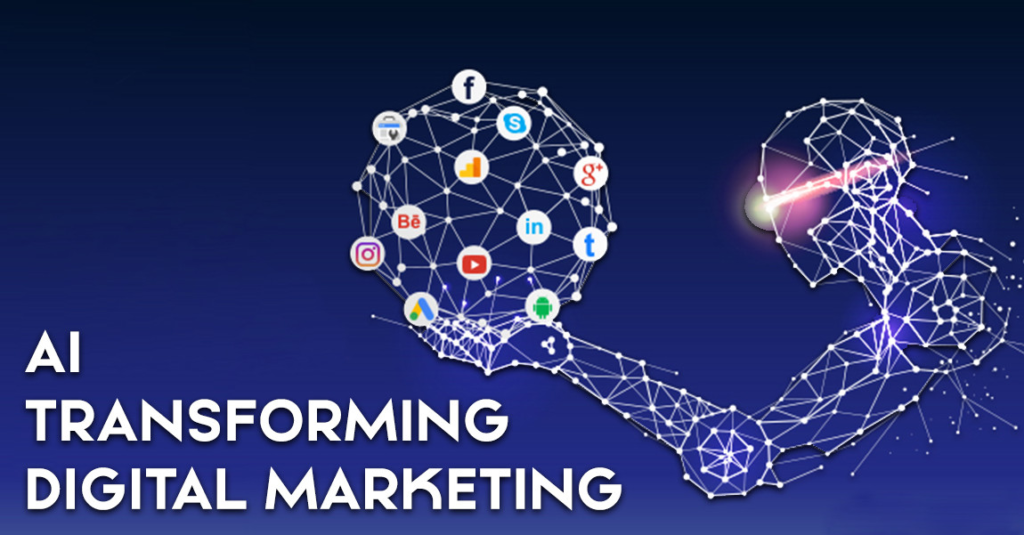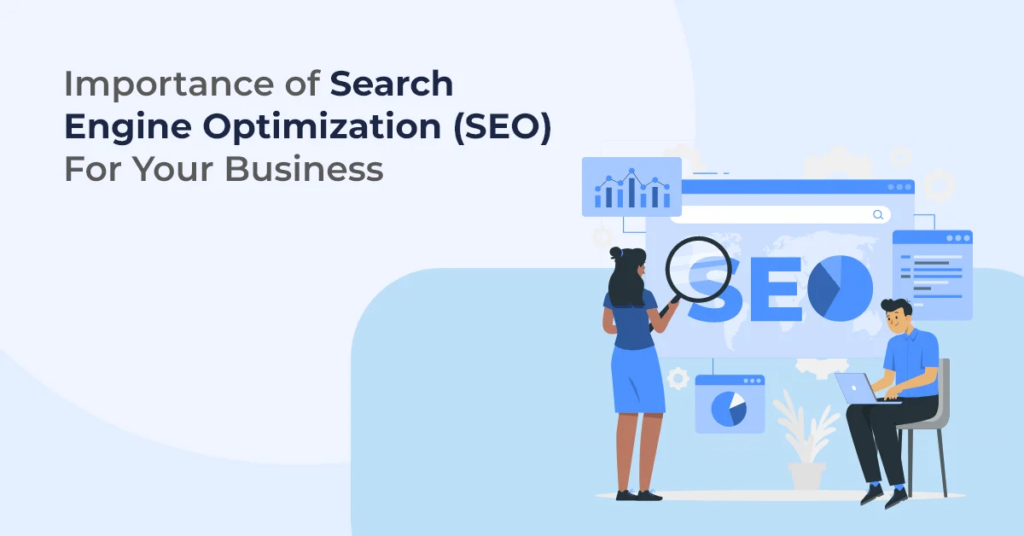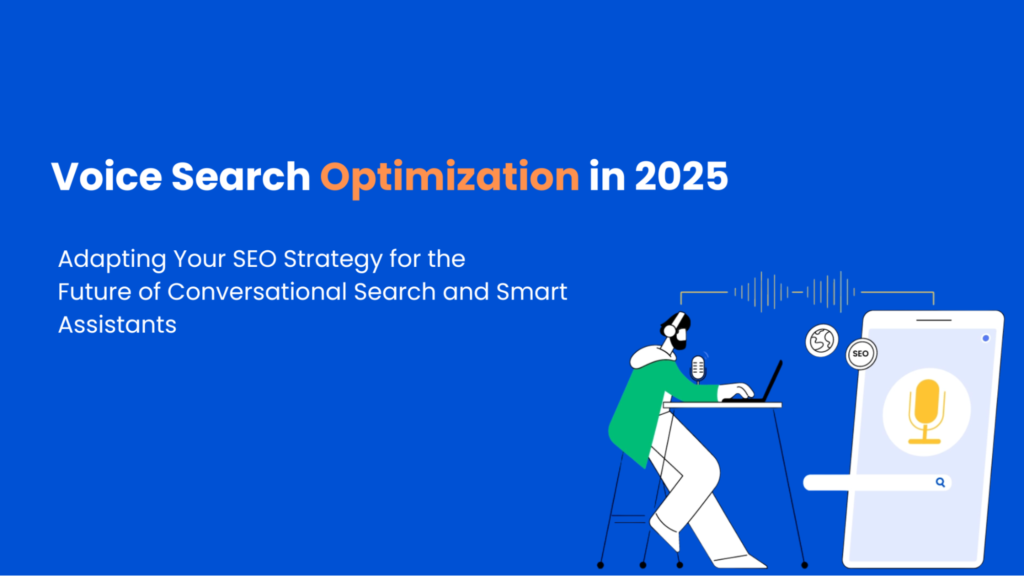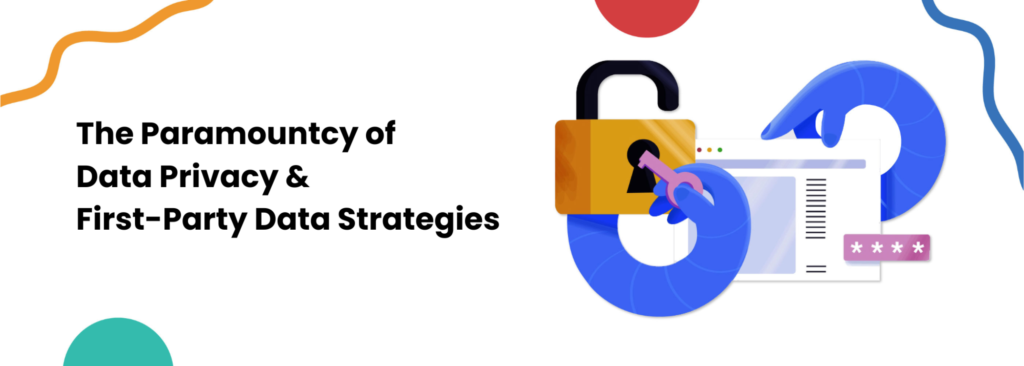Digital marketing is constantly shifting, demanding vigilance and adaptability from businesses striving for success in 2025. This comprehensive article dissects the paramount digital marketing trends that warrant your attention, synthesizing insights from recent industry analyses, expert forecasts, and the evolving technological landscape.
1. The Ubiquitous Integration of Artificial Intelligence (AI)
 Source:-https://www.linkedin.com/pulse/5-ways-which-ai-transforming-digital-marketing-seeraj-katoch
Source:-https://www.linkedin.com/pulse/5-ways-which-ai-transforming-digital-marketing-seeraj-katoch
AI has moved from concept to cornerstone in digital marketing. It powers smarter workflows, hyper-personalization, predictive analytics, and content generation at scale.
- AI in Content Creation
AI tools now do more than assist—they co-create. From analyzing trending topics to generating content briefs and even writing full-length drafts, AI platforms are accelerating content pipelines while preserving quality and brand tone.
- AI in Marketing Analytics
AI excels at processing vast datasets to reveal patterns, predict trends, and inform strategies. It enables deeper audience insights and supports more accurate attribution modeling, helping marketers maximize ROI. - Hyper-Personalized Campaigns
With AI, marketers can create micro-segments using user data (demographics, behavior, psychographics) to deliver real-time, customized messages, creatives, and landing pages for each individual. - AI in E-Commerce
From personalized product recommendations and chatbots to dynamic pricing and visual search, AI is revolutionizing the shopping experience. Voice commerce is also gaining traction, driven by smart assistants.
Recommended Resources:
- Notion AI (Free tier) – Draft, brainstorm, and summarize right inside Notion.
- Jasper AI (Paid) – High‑quality generative copywriting with brand controls.
- Surfer SEO (Paid) – AI‑driven content optimization and real‑time SEO guidance.
- OpenAI ChatGPT (Free & Paid) – Conversational AI for ideation and copy generation
2. The Undisputed Reign of Short-Form Video Content
 Photo credit: Evano
Photo credit: Evano
In an era of shrinking attention spans and the proliferation of mobile devices, short-form video content has emerged as a dominant force in the digital marketing landscape, particularly resonating with digital-native generations who consume information and entertainment in bite-sized formats. Platforms like TikTok, YouTube Shorts, and Instagram Reels have cultivated massive user bases, making them indispensable channels for reaching and engaging target audiences.
- Exceptional Return on Investment (ROI): Short-form video consistently demonstrates a high return on investment for marketers. Its engaging nature and ability to convey messages quickly and effectively often lead to higher engagement rates, brand recall, and conversion rates compared to other content formats. The relatively lower production costs associated with short-form video compared to traditional video content further contribute to its impressive ROI.
- Increasing Marketing Investment: Recognizing the undeniable power and reach of short-form video, marketers are strategically allocating an increasing portion of their budgets to this format. This trend is expected to intensify in 2025 as platforms continue to innovate and user consumption patterns solidify. The focus is not just on creating short videos but on developing compelling narratives and utilizing platform-specific features to maximize impact.
Recommended Resources :
- Synthesia (Paid) – Text‑to‑video with realistic AI avatars and multi‑language support.
- Pictory (Paid) – Auto‑convert long videos or scripts into short, social‑ready clips.
- CapCut (Free) – Mobile‑first editor with templates, auto‑captions, and effects.
- InShot (Free & Paid) – Quick trimming, transitions, and direct exports for TikTok/Reels.
3. The Evolving Dynamics of Social Media Marketing
Social media marketing in 2025 transcends the simple act of posting updates; it’s about fostering genuine connections, cultivating vibrant communities, and building enduring relationships with target audiences. The emphasis is shifting towards authenticity, collaboration, and leveraging the unique search capabilities of social platforms.
- The Ascendancy of Employee-Generated Content (EGC): Employee-generated content is gaining significant traction as a more authentic and trustworthy alternative to traditional branded content. When employees share their experiences, insights, and perspectives related to the brand, it humanizes the company and builds credibility with potential customers.
- The Power of Customer Collaboration: Brands are increasingly recognizing the value of involving their customers in the content creation process. This collaborative approach can take various forms, such as user-generated content campaigns, where customers are encouraged to share their experiences with the brand. This fosters a sense of community and ownership, strengthening brand loyalty.
- The Emergence of Social Search: Social media platforms are evolving beyond their traditional role as social networking sites and are becoming increasingly important search engines, particularly among younger demographics. Users are turning to platforms like TikTok and Instagram to discover new products, find recommendations, and research brands.
Recommended Resources :
- Buffer (Free tier) – Schedule up to 3 channels, track engagement, basic analytics.
- Hootsuite (Paid) – Enterprise scheduling, listening, and team collaboration.
- Vista Social (Free & Paid) – Unified inbox, content calendar, and affordable analytics.
- Sprout Social (Paid) – Advanced listening, reporting, and employee‑advocacy features.
4. The Enduring Significance of Search Engine Optimization (SEO)

Search Engine Optimization remains a fundamental pillar of digital marketing in 2025, serving as the primary mechanism for organic discovery and attracting qualified traffic to websites. However, the principles and best practices of SEO are continuously evolving in response to search engine algorithm updates and changing user behavior.
- The Primacy of EEAT (Experience, Expertise, Authoritativeness, and Trustworthiness): Google’s emphasis on EEAT signals a shift towards valuing content created by individuals with firsthand experience and genuine expertise in a particular subject. Marketers need to demonstrate not just knowledge but also practical experience and build trust with their audience through transparent author bios, credible sources, and a strong online reputation. This focus on quality and credibility aims to combat misinformation and elevate authoritative content in search results.
- Optimizing for Answer Engines: The rise of AI-powered search results, including featured snippets, knowledge panels, and voice search responses, necessitates a focus on “answer engine optimization.” This involves structuring content clearly and concisely, directly addressing user queries, and providing comprehensive and easily digestible answers. Targeting long-tail keywords and anticipating the questions users are likely to ask are crucial for success in this evolving search landscape.
Recommended Resources:
- Ahrefs (Paid) – Industry‑leading backlink analysis and rank tracking.
- SEMrush (Paid) – All‑in‑one suite for keyword research, audits, and voice‑search analytics.
- Mangools (Paid) – Beginner‑friendly keyword research, SERP analysis, and rank tracking.
- Ubersuggest (Free tier) – Basic keyword suggestions, site audits, and competition insights.
5. The Imperative of Deep Personalization
In an increasingly noisy digital world, personalization is no longer a luxury but a necessity for capturing and retaining customer attention. Delivering tailored experiences across all touchpoints is crucial for building meaningful connections and driving conversions.
- The Expectation of Personalized Content: Consumers have come to expect personalized content that aligns with their interests, preferences, and past interactions. Brands that fail to deliver relevant and tailored content risk being ignored or even alienating potential customers. This necessitates leveraging data to understand individual customer needs and preferences and then creating content that directly addresses those needs.
- Crafting Hyper-Personalized Customer Journeys: The future of personalization lies in creating seamless and hyper-personalized customer journeys. This involves using data to tailor every interaction a customer has with the brand, from the initial website visit to post-purchase support. By understanding individual customer behavior and preferences, marketers can deliver the right message at the right time through the right channel, creating a more engaging and effective experience that fosters loyalty.
Recommended Resources:-
- Bloomreach Engagement (Paid) – AI‑powered product recommendations and search.
- Dynamic Yield (Paid) – Real‑time customization with ML‑driven content and offers.
- OptiMonk (Free & Paid) – On‑site popups and overlays with behavior‑based targeting.
- HubSpot CMS & CRM (Free & Paid) – Data‑backed personalization tokens across emails and pages.
6. The Recalibration of Metaverse Expectations
While the metaverse generated significant buzz in recent years, its widespread adoption and immediate marketing potential have been reassessed. Marketers are now taking a more pragmatic approach, focusing on tangible results and proven strategies rather than heavily investing in nascent and uncertain virtual environments. The focus has shifted towards more immediate and impactful digital marketing channels.
Recommended Resources :-
- Roblox for Brands (Paid) – In‑game activations, virtual events, and ad solutions.
- Fortnite Creative (Paid) – Custom islands and experiences with integrated monetization.
- Nvidia Omniverse (Paid) – Collaborative 3D‑design and enterprise virtual worlds.
- Decentraland (Free) – Blockchain‑based virtual real estate and NFT integrations.
7. The Growing Importance of Voice Search Optimization

The increasing prevalence of smart speakers and virtual assistants has made voice search a significant aspect of the digital landscape. Optimizing for voice search requires a different approach compared to traditional text-based search, focusing on natural language queries and conversational keywords. Brands need to ensure their content is easily discoverable and provides direct answers to voice queries. To gain more insights on Voice search optimization , read our blog Voice Search Optimization in 2025: A Definitive Guide
Recommended Resources :
- SEMrush Voice Search Analytics (Paid) – Tracks question‑based query performance.
- Answer The Public (Free & Paid) – Visualize common questions around your keywords.
- Google PageSpeed Insights (Free) – Ensures lightning‑fast load times for voice devices.
- Google Trends (Free) – Identify rising conversational queries in your market.
8. The Immersive Potential of Augmented Reality (AR) and Virtual Reality (VR)

Augmented Reality and Virtual Reality technologies offer unique opportunities for creating immersive and engaging customer experiences, particularly in the retail sector. AR allows users to overlay digital content onto the real world, enabling virtual try-ons of clothing or visualizing furniture in their homes. VR provides fully immersive digital environments, allowing for virtual property tours or interactive product demonstrations. While still evolving, these technologies hold significant potential for enhancing customer engagement and driving conversions.
Recommended Resources:
- Unity Editor (Free & Paid) – Cross‑platform engine for AR/VR experiences and prototyping.
- Vuforia Engine (Paid) – Enterprise‑grade computer‑vision SDK for AR on mobile and eyewear.
- Snap Lens Studio (Free) – Create and publish Snapchat AR Lenses with advanced AI.
- A‑Frame (Free) – Web‑based VR framework for rapid, code‑light scene building.
9. The Continuous Evolution of Content Marketing
Content marketing remains a vital component of digital strategy, but its tactics and formats are constantly adapting to new technologies and evolving audience preferences.
- The Synergistic Power of AI and Human-Generated Content: The most effective content in 2025 often blends the efficiency and data-driven insights of AI with the creativity, emotional intelligence, and nuanced understanding of human marketers. AI can assist with research, outlining, and basic drafting, while human expertise ensures brand voice, factual accuracy, and engaging storytelling.
- The Enduring Value of Older Content: In a content-saturated environment, updating and repurposing existing, high-performing content can be a highly efficient strategy. Refreshing older blog posts with new information, optimizing them for current SEO best practices, and repurposing them into different formats, such as videos or infographics, can extend their reach and impact.
- Understanding the Emerging Gen Alpha Audience: Generation Alpha (born after 2010) is a digitally native cohort with unique consumption habits and preferences. Marketers need to begin understanding their values, preferred platforms, and communication styles to effectively engage with this future consumer base.
Recommended Resources:
- BuzzSumo (Paid) – Content‑research, trend alerts, and influencer identification.
- CoSchedule (Paid) – Editorial calendar with headline analyzer and social automation.
- Grammarly (Free & Paid) – AI‑driven grammar, style, and tone enhancements.
- Canva (Free & Paid) – Drag‑and‑drop design for infographics, social posts, and more.
10. The Paramountcy of Data Privacy and First-Party Data Strategies

privacy-friendly marketing strategies. Building trust with consumers and leveraging first-party data – information collected directly from customers – is becoming increasingly crucial.
- Cultivating Trust Through Privacy-Conscious Practices: Transparency and ethical data handling are essential for building and maintaining customer trust. Brands need to clearly communicate their data collection practices and provide consumers with control over their information.
- Leveraging the Power of First-Party Data: With increasing restrictions on third-party cookies and tracking, first-party data is becoming a more valuable asset. Brands need to invest in strategies for collecting, analyzing, and activating first-party data to gain deeper customer insights and deliver more relevant and personalized experiences.
Recommended Resources :
- Twilio Segment (Free tier) – Schema‑driven collection and routing of first‑party data.
- Tealium AudienceStream (Paid) – Real‑time profiles, event streams, and audience hydration.
- Adobe Real‑Time CDP (Paid) – Scalable data unification within Adobe Experience Platform.
- Insider CDP (Paid) – AI‑driven segmentation and cross‑channel orchestration.
11. The Convergence Towards Total Video
The traditional distinctions between broadcast and streaming television are becoming increasingly blurred. Consumers are shifting their viewing habits towards a more fragmented landscape of streaming services and online video platforms. Marketers need to adopt a “total video” strategy that encompasses both traditional and digital video channels to reach their target audiences effectively. Investment in TV streaming advertising is expected to continue its upward trajectory.
Recommended Resources:-
- Display & Video 360 (Paid) – Google’s end‑to‑end CTV and online video DSP.
- The Trade Desk (Paid) – AI‑powered omnichannel buying across CTV, display, and audio.
- MediaMath (Paid) – Data‑driven programmatic with advanced identity solutions.
- Adform (Paid) – Unified DSP/DMP for cross‑device video and display.
12. The Heightened Challenge of Social Media Attention

Capturing and retaining user attention on increasingly crowded social media feeds is becoming more challenging. Social feeds are oversaturated. To cut through the noise, brands must prioritize storytelling, originality, and interactivity in their content.
Recommended Resources:
- Typeform (Free & Paid) – Conversational quizzes, surveys, and calculators with AI features.
- Outgrow (Paid) – No‑code quizzes, calculators, polls, and chatbots for lead gen.
- Zembula (Paid) – Dynamic email banners and smart blocks that update in real time.
- Ceros (Paid) – Drag‑and‑drop interactive infographics, lookbooks, and microsites.
13. The Rise of Content Experimentation on Social Media
Social media teams are embracing bold A/B testing, experimental formats, alternative personas, and outbound commenting strategies to connect with new audiences.
Recommended Resources:
- Convert Experiences (Paid) – Server‑side A/B testing and feature flags.
- Optimizely (Paid) – Full‑stack experimentation with front‑end and back‑end tests.
- VWO (Paid) – Heatmaps, session replays, and AI‑guided test suggestions.
- Unbounce (Paid) – Landing‑page builder with built‑in A/B testing and traffic routing.
Conclusion
The digital marketing landscape of 2025 presents a dynamic interplay of technological advancements, evolving consumer behaviors, and shifting industry priorities. By strategically embracing the power of AI, capitalizing on the dominance of short-form video, prioritizing personalization, adapting to the evolving social media and SEO landscapes, and navigating the complexities of data privacy, businesses can position themselves for success in the years ahead. Agility, continuous learning, and a willingness to experiment will be the hallmarks of effective digital marketing in this ever-changing environment.


